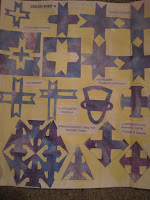 |
| My workbook - image 35 |
 |
| My workbook - image 34 |
 |
| My workbook - image 33 |
 |
| My workbook - image 32 |
 |
| My workbook - image 31 |
 |
| My workbook - images 25 -29 |
 |
| My workbook - images 22 & 23 |
 |
| My workbook - image 35 |
 |
| My workbook - image 34 |
 |
| My workbook - image 33 |
 |
| My workbook - image 32 |
 |
| My workbook - image 31 |
 |
| My workbook - images 25 -29 |
 |
| My workbook - images 22 & 23 |
 |
| My workbook - Image 15 |
 |
| My workbook - Image 14 |
 |
| My workbook - Image 13 |
 |
| My workbook - Image 12 |
 |
| My workbook - Image 11 |
 |
| Design Sheet C - Image 10 |
 |
| Design Sheet B - Image 9 |
 |
| Practice sample - Image 8 |
 |
| Design Sheet A - Image 7a - photo |
 |
| Design Sheet A - Image 7a Scanned work but missing detail on right Small image above shows everything |
 |
| My workbook - Image 7 |
 |
| Inked cartridge paper using Brusho powders - Image 6a |
 |
| Stars cut from inked paper - Image 6 |
 |
| Stars cut from inked paper - Image 5 |
 |
| Block printing - Image 4 |
 |
| Block printing - Image 3 |
 |
| My inked cartridge paper - Image 2 |
 |
| My workbook entry - Image 1 |